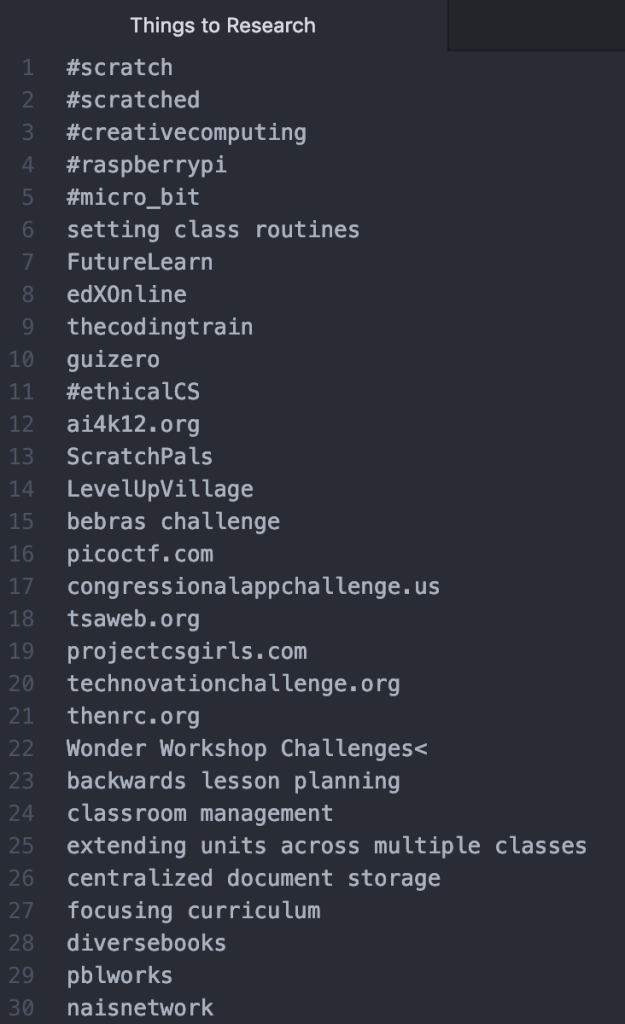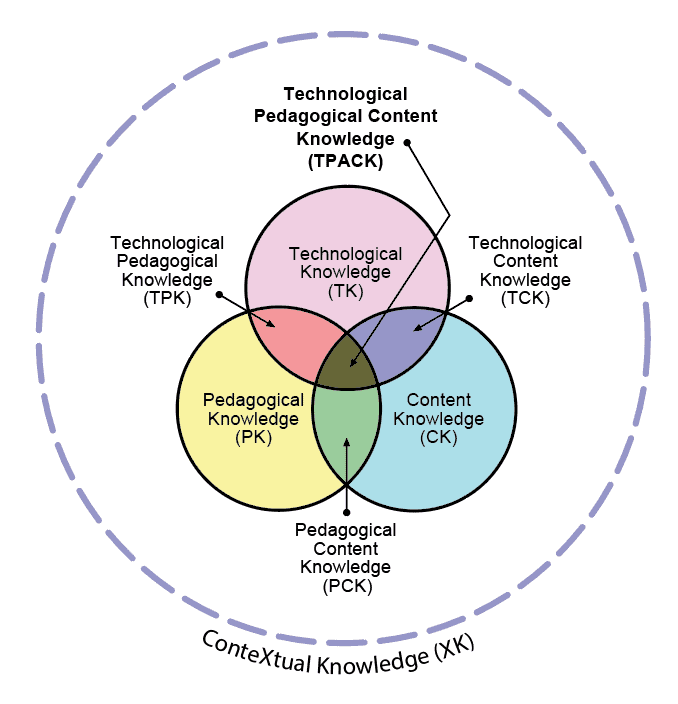Meet Dana, a sixty-year old physical education instructor at a K-8 school in Southern Oregon.
For my assignment to teach a colleague about algorithms and decomposition and then ask them to integrate them into an existing lesson plan, Dana was my choice for a couple of reasons. First, we both teach at a school that is part of an NSF-funded research project to instruct teachers on how to integrate CT into their lesson plans in core subjects, which limited the set of teachers I could work with on this assignment to only elective instructors in physical education, art, and drama; to work with any other teachers might skew the research results. Second, when news of the research project was recently published in the local paper, Dana was the first person to approach me about it and express her interest. A couple of weeks later, when I explained this assignment to her, she was incredulous at first, but quickly agreed to try. We scheduled to meet the following week.
Intervention
After thirty minutes of instruction on algorithms and decomposition, Dana was unable to determine how to incorporate algorithms into her classes. I suggested her students, prior to game start, could build algorithms composed of different strategies they could use to win the game, essentially giving her students the opportunity to use algorithms to become coaches.
After considering, she shared there was one defensive strategy that she had struggled to convince her students of in her Capture the Flag class. We spent the rest of the session using decomposition and algorithms to figure out how to teach that defensive strategy to her students. Once taught, they could set their defense correctly prior to the start of the game, as the first step in their “defensive algorithm.”
Discussion
While there were many possible reasons Dana was unable to figure out how to integrate algorithms into her class, from teacher ineffectiveness to lack of time for student understanding, I would like to focus on two specific ones: the limitations of the existing class framework, and the lack of an established algorithmic “language” or set of usable steps.
Part of what allowed me to imagine that her students could become coaches was my long study of computational thinking–far longer than the thirty minutes Dana had–and a full week’s preparation in thinking about how algorithms could be integrated into physical education.
But, more importantly, I was able to imagine that scenario because I was ignorant of inherent restrictions of the framework of Dana’s classes. For example, Dana shared that her philosophy for physical education was that students “should be able to run around without having to do any thinking as a break from their other classes,” a philosophy that was in direct conflict with the idea of having students think about algorithmic steps before engaging in play. But, the connection of algorithmic planning to coaching was a natural fit with physical education, and paired with Dana’s natural interest in CT, provided her with enough motivation to adapt her philosophy.
When I broached the subject of strategy, Dana also shared that she tried not to teach students too much strategy because she wanted them to “figure things out on their own,” but would try to instruct students during games if they continually repeated poor in-game decisions. However, based on her philosophy of play-unburdened-by-thought, she had eschewed intentional instruction of game strategy in her classes, so her students did not have any firm knowledge of individual strategic moves or concepts to use to build any sort of algorithm or “coach’s plan” prior to the start of a game. Dana could not conceive of her students building algorithms, because she understood that her students had no knowledge with which to build their algorithms.
Oddly enough, the main difficulty I had in communicating CT concepts to Dana was that I feared that the best examples I could have used to explain algorithms to her, as a strategic plan used by coaches in sports, were too similar to the solution she herself would have to figure out to integrate algorithms into her lessons; I too feared I would be giving away the answer!
In retrospect, as obvious as the link between a sports example would be with her own lesson plans, it would not have precluded her from having to consider exactly what changes she would have needed to make to her lesson plans. After all, we did discover that to have students plan algorithms before games, she would still need to teach them individual strategic moves.
Epilogue
Dana tried out her new algorithm-infused lesson plan yesterday and was tentatively happy with the results. Students stayed engaged with the lesson on a single instance of defensive strategy, shared their own observations, and even gave suggestions for a better alternate strategy. Afterwards, she noticed the students employing the strategy she taught in the set of games they played.
We were both intrigued enough by the results to resolve to find new strategies to teach, both defensive and offensive ones, to expand the palette with which students can construct their before-game strategies. It will be interesting to observe how students respond to the challenge of learning to be coaches, and we are hopeful this added mental dimension to physical education instruction will add to, instead of detract from, the overall enjoyment of her classes.






